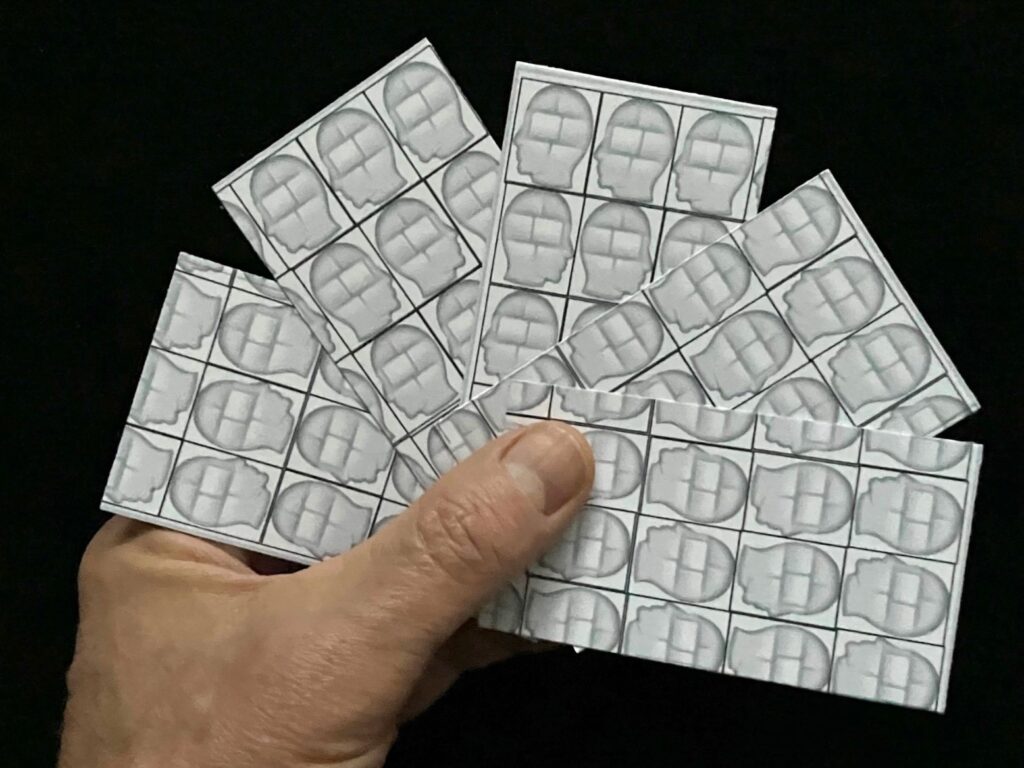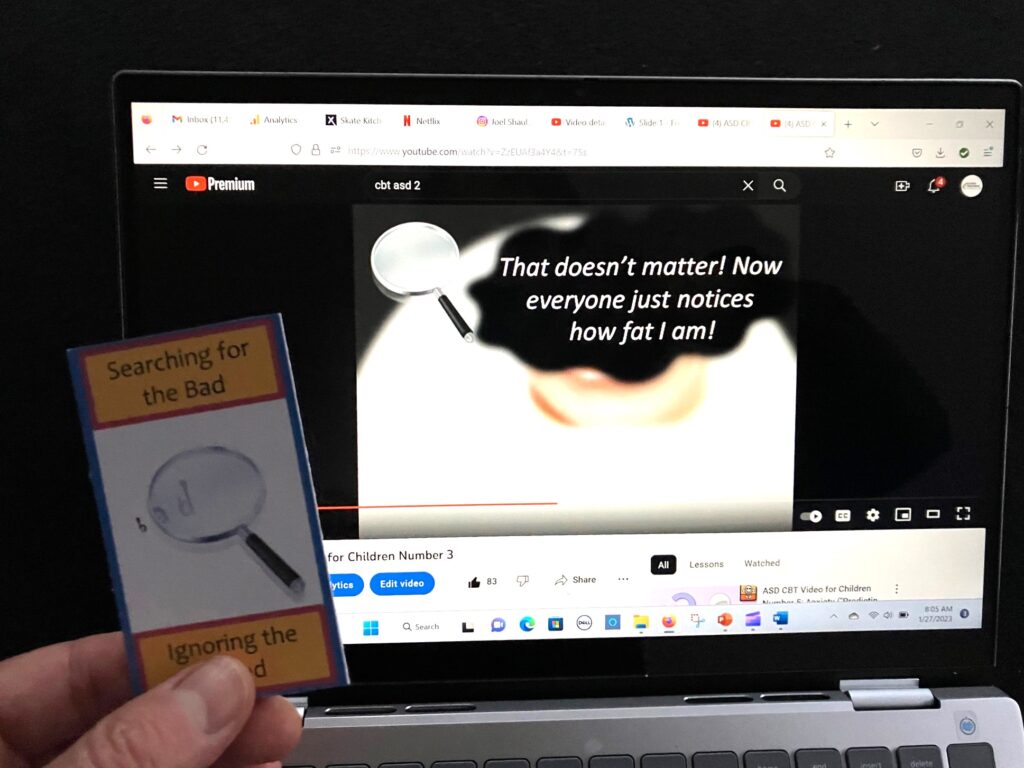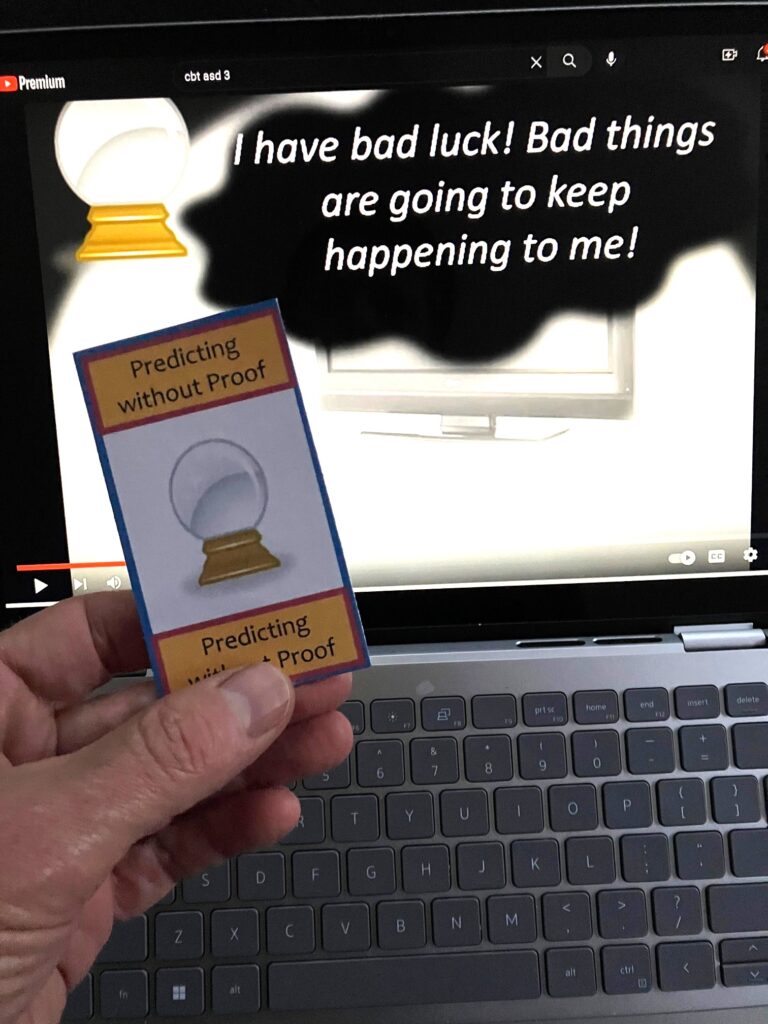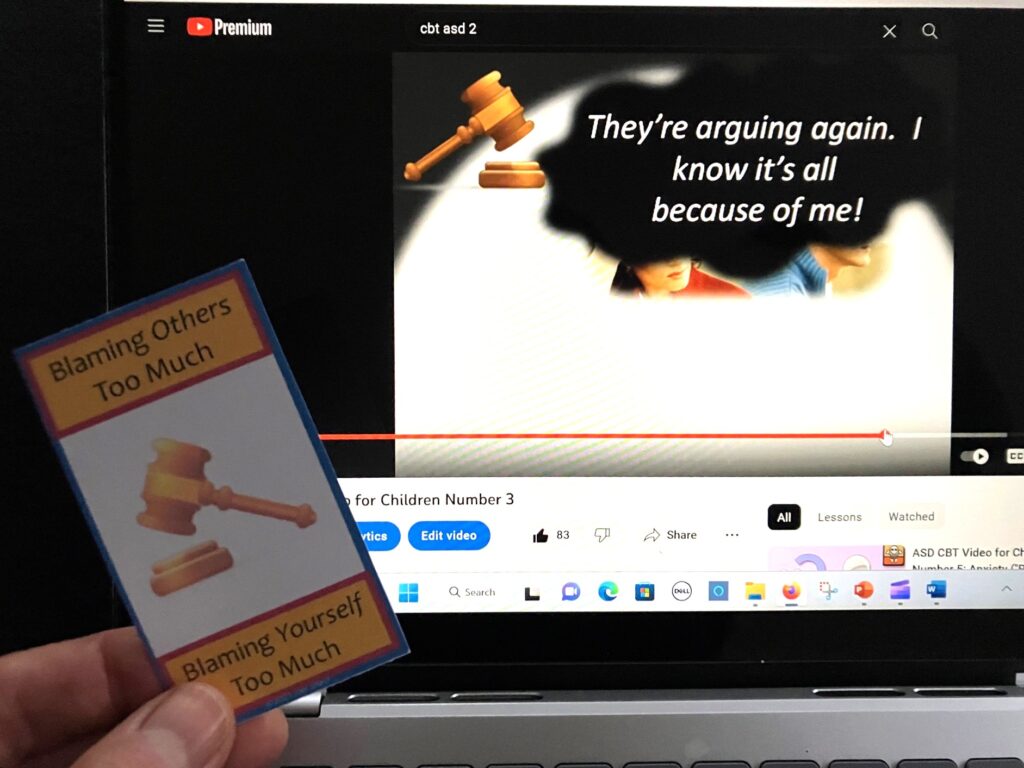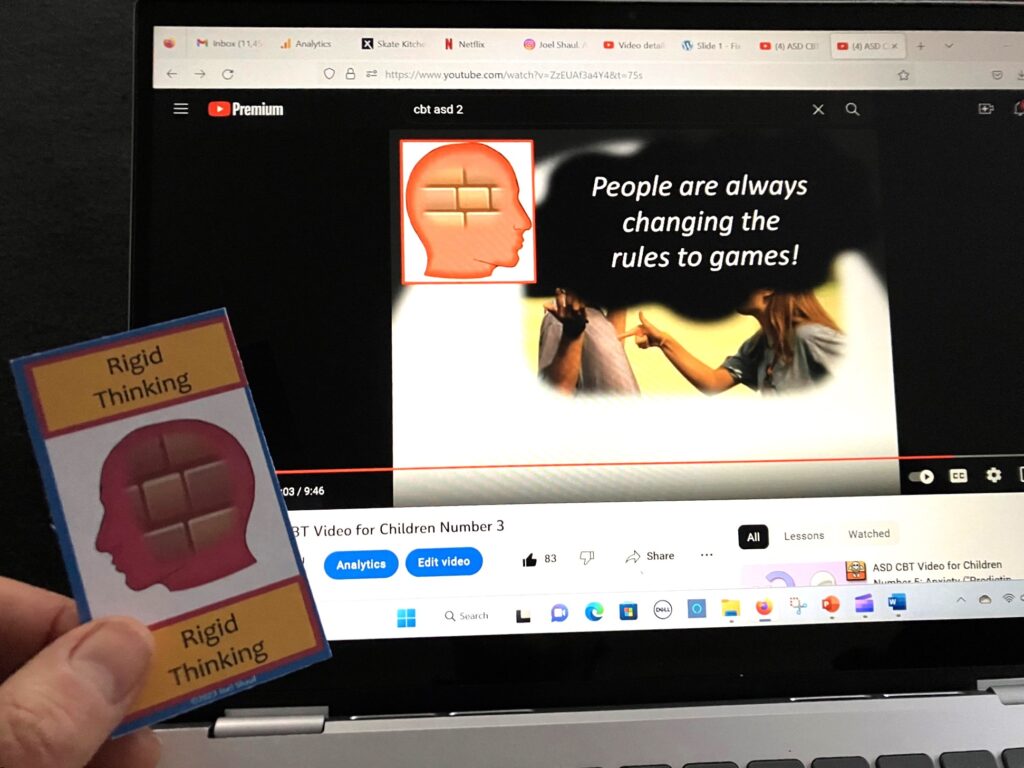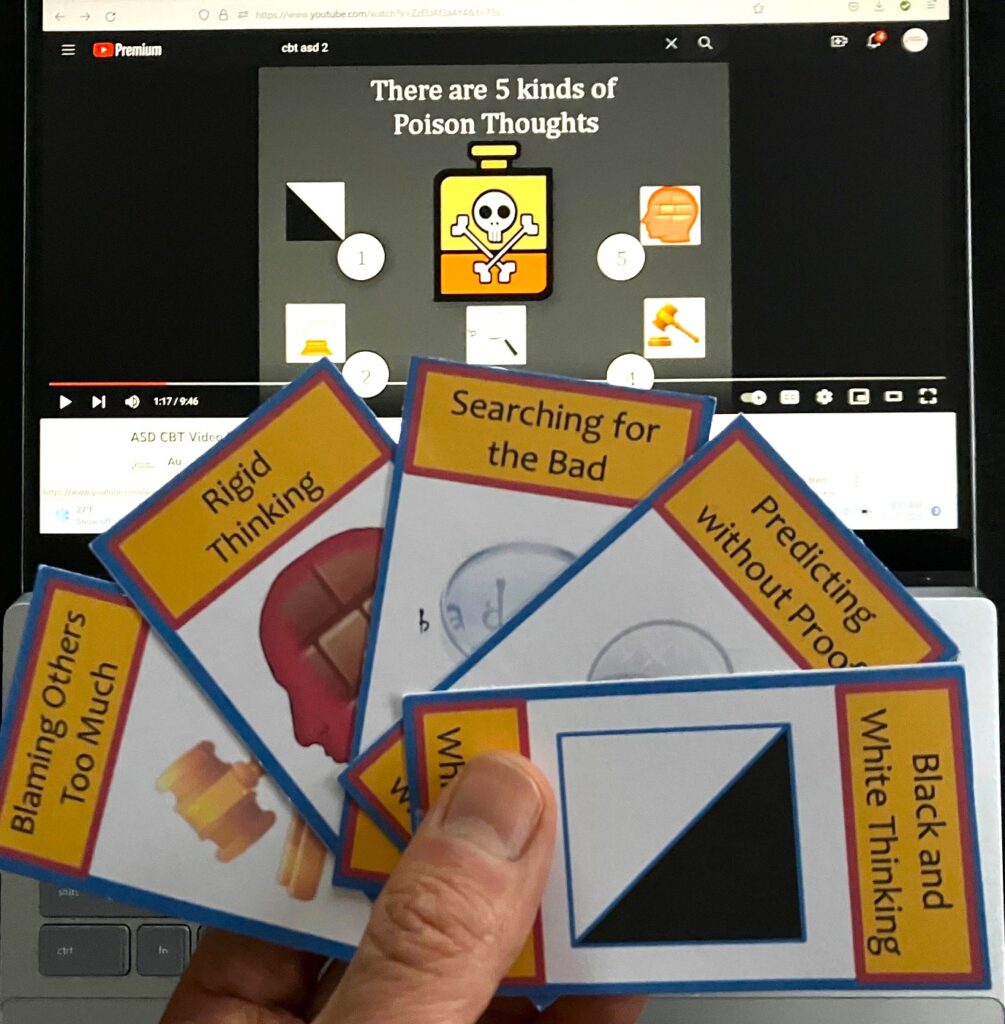
CBT token systems – CBT cards, a free download
Cognitive behavioral therapy, whether it’s for a kid or an adult, can be hard and discouraging. After all, the main work involves the arduous process of finding and rooting out automatic negative thoughts that get stuck in our minds. When we are doing CBT with children, we obviously can’t turn this therapeutic activity into something “fun,” but by adding some game-like elements we can can help propel our work forward.
This article introduces a game-like token system with a free download. It is a set of cards you can use along with the CBT YouTube Videos for Kids (these videos are explained in much detail here).You use the cards to reward the child for identifying automatic negative thoughts in the videos and in their own minds.
How to make the cards
Print the cards on card stock, or on paper that you will then laminate. If you want to get fancy, print the decorative back before printing out the front of the cards.
How to use the cards
Once you have introduced the five Poison Thought categories, you can keep five piles of the Poison Thought Cards handy while viewing the CBT Videos for Kids. Then, you can hand out the cards one by one to children in order to recognize and reinforce a child’s success in:
a. Identifying a Poison Thought experienced by a child in the video
b. Identifying one of their own Poison Thoughts
c. Thinking of Antidote Thoughts which might apply.
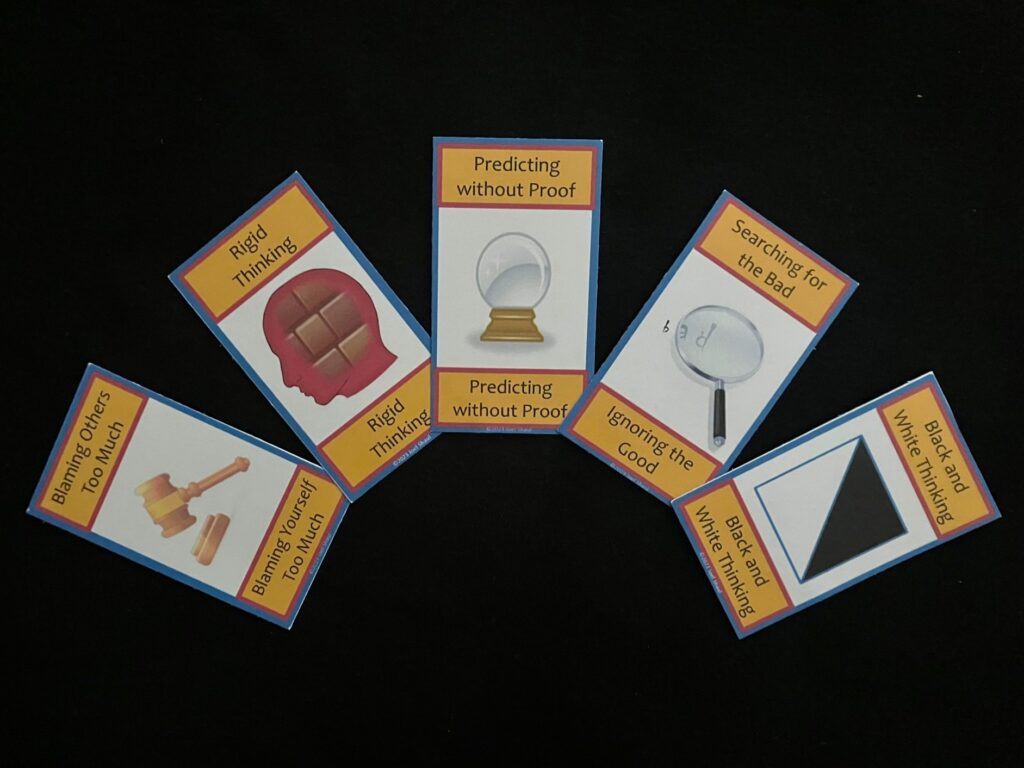
Certain kinds of children tend to like token systems like the CBT cards
I have often used these cards when doing CBT activities with children on the higher end of the autism spectrum. I have found that children and teens with ASD are often very receptive to these game-like devices in therapy. First, young people with ASD might not notice or be sufficiently reinforced by the subtle, spoken encouragement offered by clinicians during therapy sessions. They may actually prefer a small pile of CBT cards as tangible evidence that they are “getting it” during therapy. Second, neurotypical children, when they approach teenage years, tend to become averse to these playful gambits and they can feel manipulated by them. But teenagers with autism are actually seldom put off by these CBT cards, so with them I use them often.
I have used cards like this in my work for years. I have to say that it is a really straightforward and useful tool to use. It adds a little levity to hard work without undermining the serious nature of CBT. If you print out these cards, you probably will end up using them over and over when you work with the CBT Videos for Kids.
Joel Shaul, LCSW
Follow these links to other posts in this series.
Intro: Refinements to Make CBT Better Suited for Kids [link]
Part 1: About CBT YouTube Videos & How to Use Them [link]
Part 2: CBT Token Systems – CBT Cards, a Free Download [link]
Part 3: More CBT Token Systems – Using Mr. Yuk Stickers [link]
Part 4: Creating Thought “Enemies” and “Heroes” in Child CBT [link]
Part 5: Tailoring CBT Methods & Media to the Individual [link]


